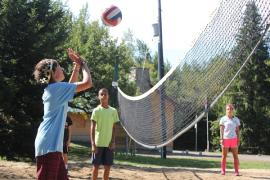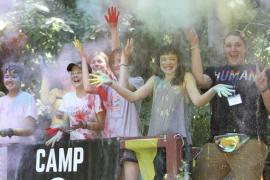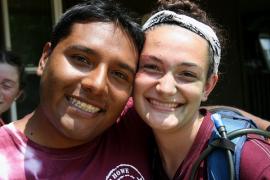Hello Camp Evaluators! I’m so excited you took a minute of your busy, busy summer to read the Research 360 blog. I used to be a day camp director, so I know first-hand what is at the tops of the summertime to-do list: Get. Through. The. Day. With every camper and staff member safe. And happy! And, on a really good day, their parents are happy, too.
For me — as I imagine is the case for many of you — evaluating our programs rarely made it to the top of my daily survival list because they seemed far removed from the things that required immediate attention every day.
The most common forms of camp evaluation are end-of-program or end-of-summer camper, staff, and parent surveys. In these surveys, we typically evaluate how people felt about their experience at camp, what they learned, and if they plan to return next year. This is called summative evaluation because we are gathering information about our program when it is over. This is a common approach for camp people because it defers the work until we have more time.
Formative evaluation is just the opposite: gathering information while the program is in progress. In most cases, formative evaluation means surveying or interviewing campers, staff, or parents during a typical camp day or at some point in the middle of the program. The benefits here are tremendous. First, the information you gather through formative evaluation can be used to make small improvements before it is too late. Perhaps more powerful are benefits that come from asking people what they think and then showing them how their feedback is used to make real changes.
The problem with formative evaluation is that it requires time and energy when time and energy are in short supply. But what is plentiful during the summer? Campers! So, is it possible they could help you collect information in the middle of a camp session?
Yes, they can; in fact, they can quite probably generate better information about the program than you could achieve through a traditional survey or interview. Engaging campers in evaluation in this way is a form of participatory or empowerment evaluation, which means that the people being evaluated become the evaluators. In this case, campers would decide what they want to know, plan how they will gather information, gather that information by talking to other campers or giving them a survey, and then analyzing that information so they can make recommendations for program improvements. Giving youth control over formative evaluation sends a powerful message: this is your program and your voice matters.
Steps to Engage Campers in Evaluation
- Identify a small group of campers who might be appropriate partners, like senior-level campers or counselors-in-training; ideally, these campers will have a deep sense of connectedness to camp and their peers. Ask this group if they would be willing to help you gather information from their fellow campers about their experiences at camp. Consider framing it as a service project for camp — but be sure to give them time so it does not take away from other fun activities. This is your evaluation team.
- Ask a staff person — likely one that works directly with this group on a regular basis — to facilitate a conversation in which the Evaluation Team determines what they want to know about a specific aspect of camp. Do they want to want to help improve the activities? The food? All camp themes and events? Or, better yet, are they interested in what other campers are learning during their time at camp? Make sure this staff person can help the team identify questions around which camp staff can realistically make changes. These are your evaluation questions.
- Let the group think about how it can gather this information. They will likely think about using a survey or interviewing campers, and these are good options, but you might also encourage them to think creatively. What about observing how much fun campers appear to be having in their activities, or measuring food waste in the dining hall? Help the Evaluation Team develop their evaluation methods and test them with a small group of campers before using these methods with the entire camp.
- Support the Evaluation Team as they gather information using the plan they developed in the previous step. Make sure they have time in their day to do this, and encourage them to announce their project to the camp before they start collecting information.
- Schedule time for the Evaluation Team to analyze their data. Make this fun by ordering pizza and giving the team space to work. This is a critical step because it is here that the group might see things in the data that only they can see. Encourage them to identify two or three key takeaways — realistic recommendations they feel camp staff should know.
- Finally, let the Evaluation Team decide how they want to present their findings to camp staff. A presentation, a poster, and interpretive dance…anything that is fun and celebrates their work. Most importantly, communicate back with the team within a few days how their findings will be used at camp- even small changes related to their recommendations will affirm their work and the value they bring to camp.
Empowerment evaluation is a powerful tool, not just because it provides useful information, but also because it empowers participants, in this case campers, to take ownership of their camp and demonstrates that their voice matters. Formative evaluation like this is not easy and still requires an investment of staff time and resources, but it is one way you can leverage your campers’ love of camp to help you make small improvements before they leave.
Laurie Browne, Ph.D., is the director of research at ACA. She specializes in ACA's Youth Outcomes Battery and supporting camps in their research and evaluation efforts. Prior to joining ACA, Laurie was an Assistant Professor in the Department of Recreation, Hospitality, and Parks Management at California State University-Chico. Laurie received her Ph.D. from the University of Utah, where she studied youth development and research methods.
Photo courtesy of Green River Preserve in Cedar Mountain, NC
Thanks to our research partner, Redwoods.
Additional thanks goes to our research supporter, Chaco.





